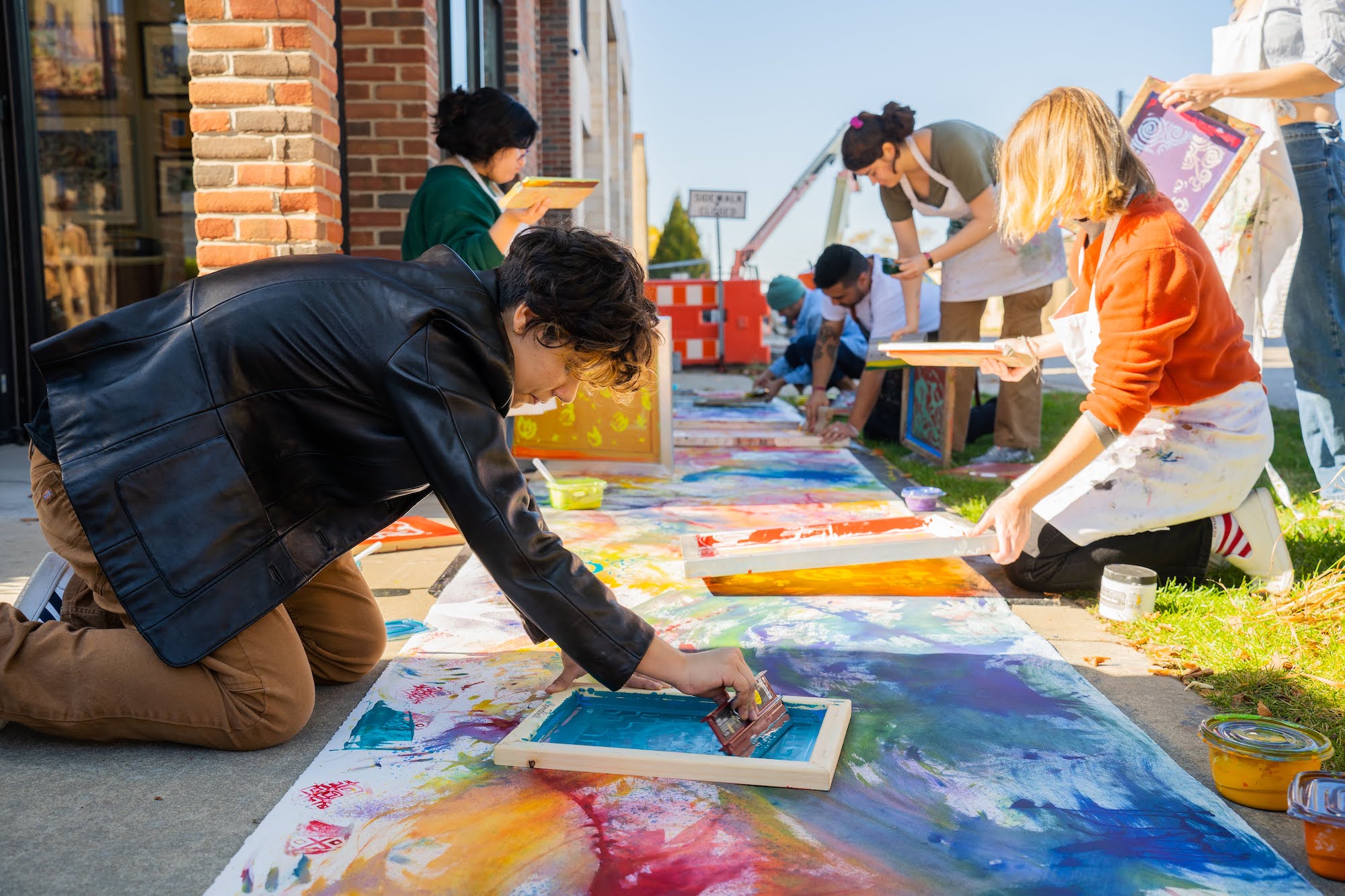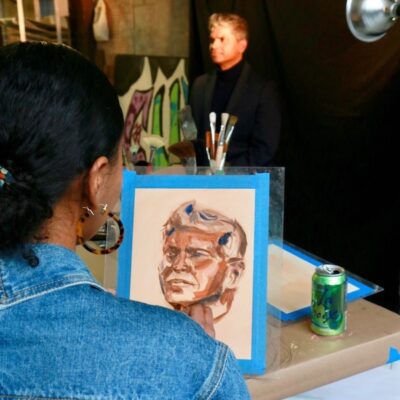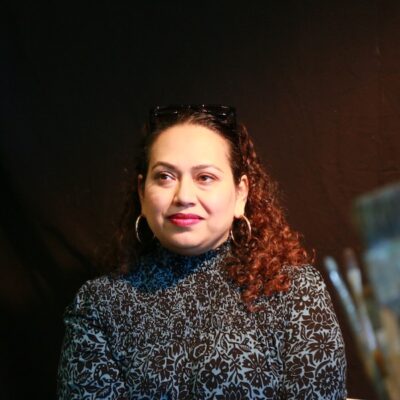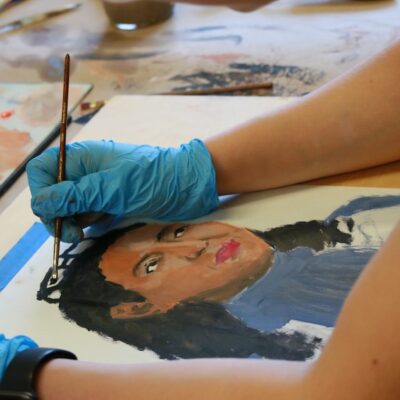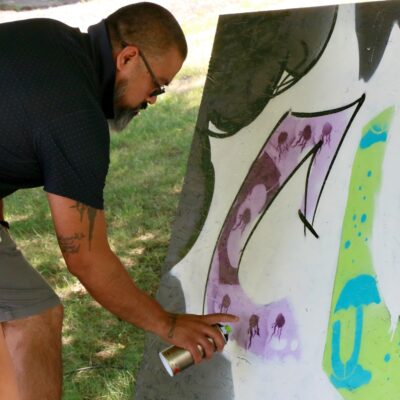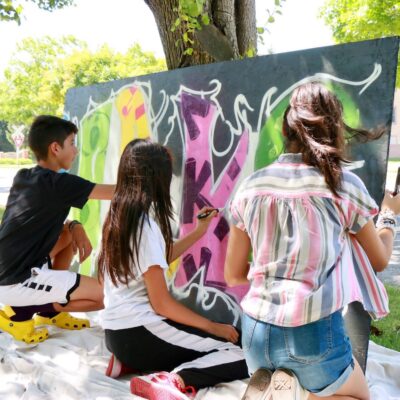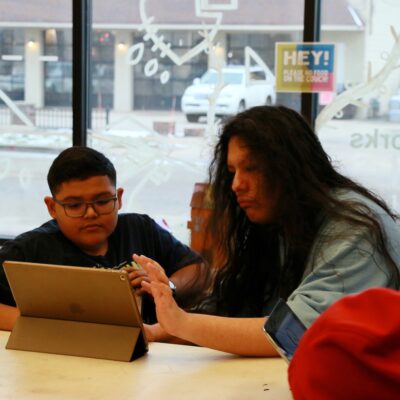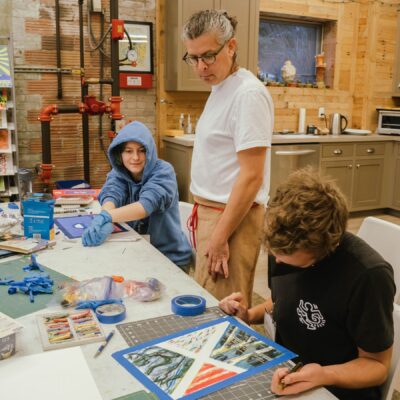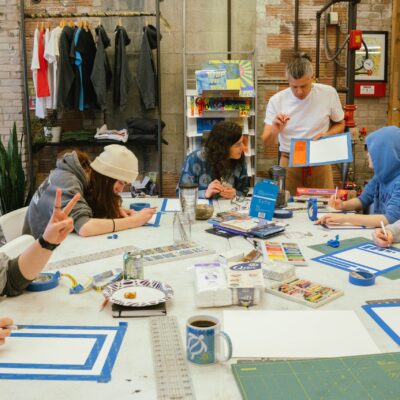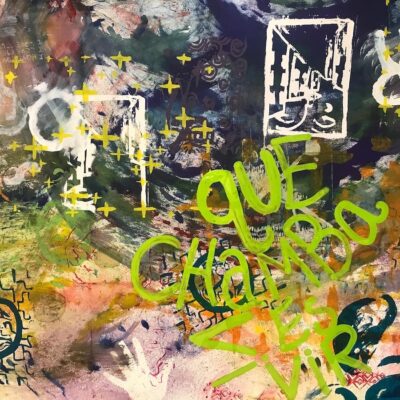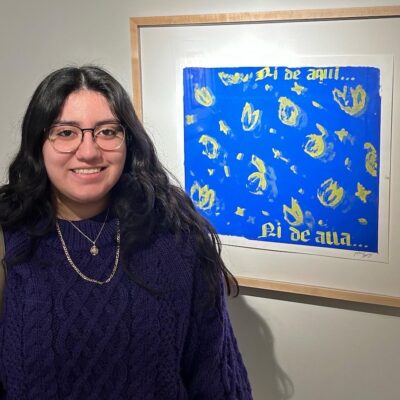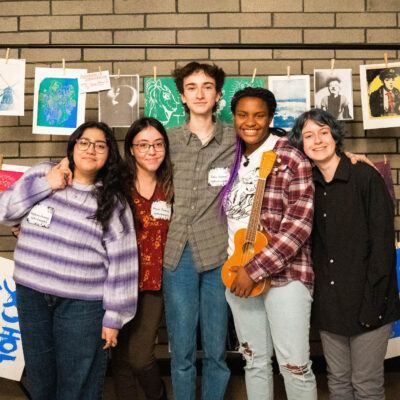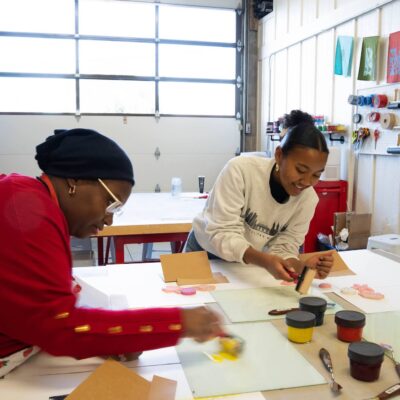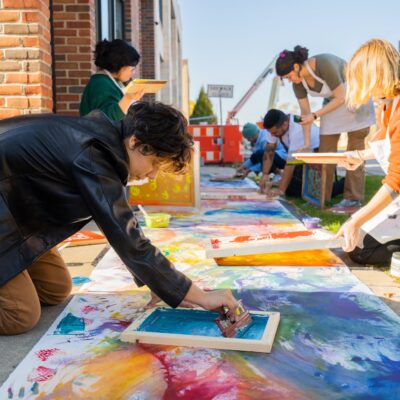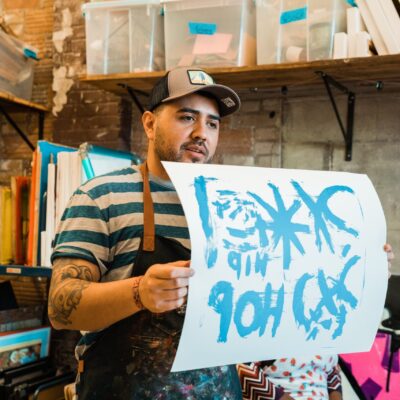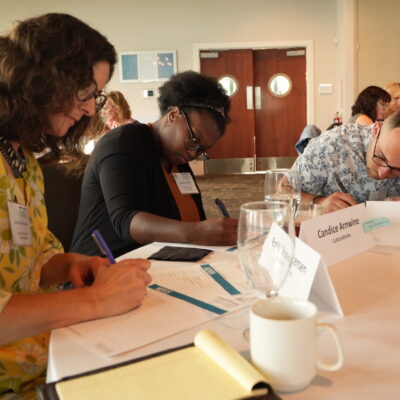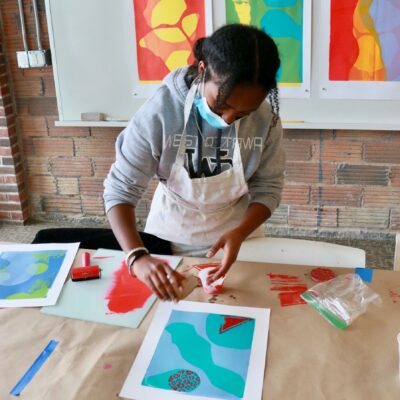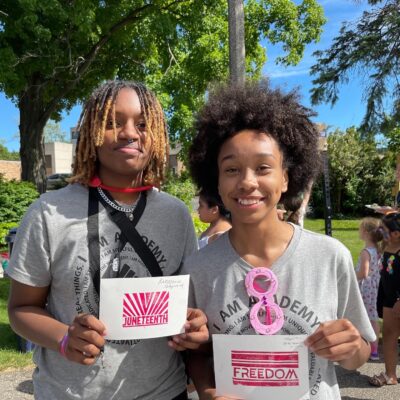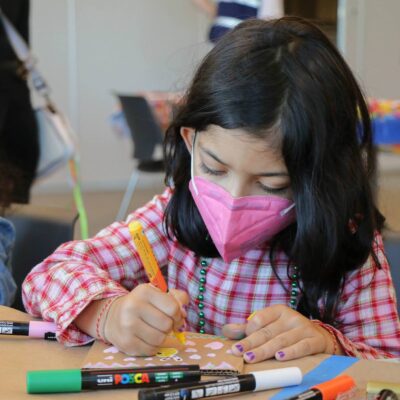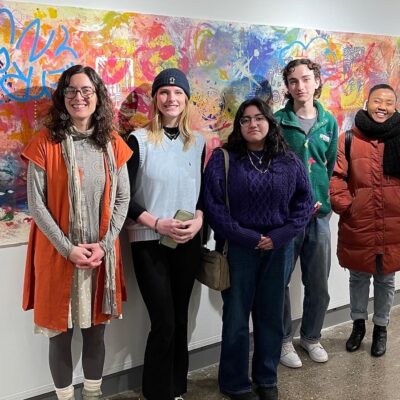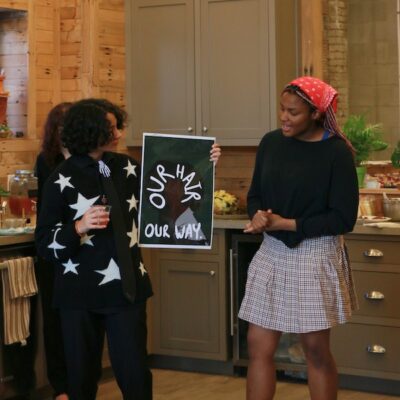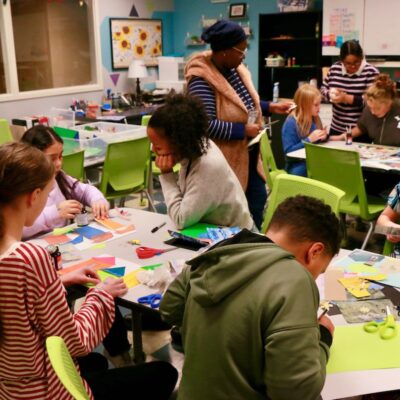$49,000 in funding in collaboration with Hope College Department of Art and Art History
Over the past year, CultureWorks invested over $43,000 in initiatives aimed at increasing engagement and representation in the visual arts among artists and students from traditionally underrepresented communities. In collaboration with Hope College Department of Art & Art History, this joint $49,000 grant from the Mellon Foundation funded opportunities for greater cultural diversity & representation by:
- Increasing hours and wages for hiring a full-time BIPOC Program Director to oversee ongoing strategic partnerships and help provide greater access to arts programming for traditionally underrepresented communities
- investing in the mentoring and equipping of BIPOC youth in after-school classes using art and design-based projects to develop skills in critical thinking, innovation, and engagement as global citizens
- supporting and empowering diverse leadership (staff, interns, and visiting artists), and the development of curriculum that celebrates multicultural and multiethnic heritages
- funding the creation of a visiting artist program committed to bringing in artists that accurately reflect the diversity of participating students
- funding a new internship program for Hope College Art & Art History majors
- outfitting the CultureWorks studio with one-time purchases of industry-standard equipment, work surfaces, and organizational systems, thereby increasing capacity and efficiency, while providing a suitable workspace for visiting professional artists.
Through this funding, we hired Candice Arnwine as our first full-time Program Director, who oversaw program management & curriculum development and led workshops with Arts in the Parks (another Mellon Foundation Community-Based Initiative grantee), Boys and Girls Club, LAUP Fiesta, Pride Fest, WO Migrant Program, and I Am Academy, multiple school visits, and our Fall Leadership Retreat. Candice also fully participated in our intensive training and consultations with the DeVos Institute of Arts Management and by our recommendation, she was selected as a Fellow in their Next Gen Leadership Development Program.
Mellon Foundation funding enabled us to support and empower other BIPOC artists in leadership, including Roberto Torres Mata and Jason Wesaw as Visiting Artists, International Student Abi Nasari as Intern, and Miguel Ayala as Instructor. We also worked in collaboration with 3sixty/Eastcore Neighborhood to offer a mural workshop with several Latino muralists and hired Miguel Ayala to teach Graffiti and lead Open Studio. Additionally, we hired a former student and aspiring poet, Samuel Vega, to speak at our fall benefit and read his poetry there. We licensed and included one of Samuel’s poems in our spring student exhibit at Hope College in conjunction with Roberto Torres Mata’s solo exhibit and Roberto and Samuel are excited to dream about future collaborations as well. With the help of these BIPOC leaders, we’ve been able to inspire and encourage BIPOC students in our classes, workshops, and special events. In all, CultureWorks provided meaningful work, professional development, and competitive wages for 9 BIPOC artists over the past year, two of whom were employed on our core leadership team. Over $29,000 was paid to BIPOC artists as employees, interns, and contracted educators, which represents 24% of total wages.
We’ve developed curriculum that celebrates multicultural and multiethnic heritages for our hands-on experiences at the International Festival, LAUP Fiesta, Ready for School’s La Familia event, Juneteenth, and I Am Academy Black Heroes workshop. Students at the Black Heroes workshop used screen printing and other printmaking techniques to create portraits of their Black Heroes, which were exhibited at the Saugatuck Center for the Arts in the fall of 2022.
Funding also helped support our live Portraiture Class, taught by artist and civil rights activist Elizabeth Jenkins and assisted by Abi Nasari, an international student from Tanzania. We hired models who are all 1st or 2nd-generation immigrants who are active leaders in our community and asked them to share about their experiences and perspectives in response to a series of questions regarding culture, identity, geography, and community engagement/belonging.
Over the course of 9 weeks, students gained confidence in rendering realistic portraits using a variety of mediums including charcoal, oil paints, pastels, and acrylics, while also learning about the personal lives of our honored guests. Elizabeth introduced students to the Loomis Method, and they drew inspiration and encouragement from the work of Alice Neel and Jordan Casteel. Models this included: Abi Nasari (Hope College Studio Art Major), JP Sundararajan (Head of Global Missions for the RCA), Michelle Vera Garcia (Child & Adult Protective Services), Mar Carrillo (Global Brand Manager at Amway), Jenny Arrollo-Bell (Nurse), Zahabia Ahmed-Usmani (Program Coordinator for the Kauffman Interfaith Institute) & Odalis Medellin, (CultureWorks Alum and former Intern, recent Graduate from GRCC).
At our first visiting artist workshop, with Roberto Torres Mata, we reflected on themes of place, identity, & language, through expressive mark making and screen printing. Participants created their own individual works and collaborated on a 30ft mural which expresses ideas of movement and displacement. Funds were used to equip our printmaking studio with a screen drying unit and screen storage rack, along with inks, screens, paper, and other necessities.
At our second visiting artist workshop, students had the incredible opportunity to learn from and work alongside Jason Wesaw, a multi-media artist and member of the Pokagon Band of Potawatomi. Jason’s mixed media work on paper is a beautiful expression of timeless connection to the natural world and to his community. Inspired by abstract expressionism as well as traditional and contemporary Native crafts, his work speaks of order in the midst of chaos; of healing in the midst of brokenness; of belonging and restoration, in the midst of displacement and exile. We looked at Jason’s work again, and the work created at his workshop, with students in our Open Studio class, where we reflected on ideas like convergence and intersection, borders, gardens, and wilderness.




